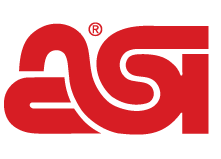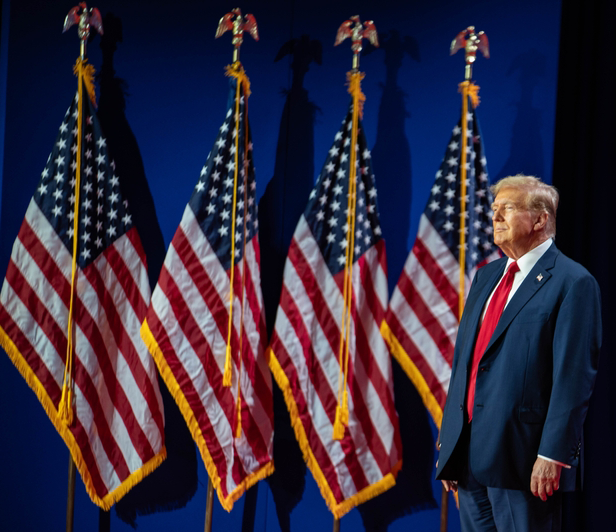News February 13, 2025
Trump Orders Study of Reciprocal Tariffs, Promo Reacts
If implemented, the so-called tit-for-tat levies could make importing products from a broad range of nations more expensive and potentially have “ripple effects” that dampen promo spend, some industry executives fear.
Key Takeaways
• The Action: President Donald Trump has signed a memorandum to study adjusting U.S. tariffs to match other countries’ tariffs/trade barriers on the U.S.
• The Study: Administration officials are tasked with proposing reciprocal tariffs as countermeasures. The analysis could conclude within 180 days.
• Promo Concerns: There’s worry the reciprocal tariffs, if implemented, could place further cost pressures on promo and affect the broader economy, leading to price increases on merch and less investment in promotional products. Still, some execs urged patience and prudence, saying it's too soon to say how things will play out.
President Donald Trump is giving more steam to his tariff train.
On Thursday, Feb. 13, the United States' 47th president signed a memorandum that directs the Commerce Department and U.S. Trade Representative to study how U.S. tariff rates could be adjusted to match current levies and trade barriers that other countries place on American exports to those nations.
The memorandum does not impose reciprocal tariffs, nor does it outline specific rates. Rather, Trump wants his administration to go nation by nation and propose levies that would effectively serve as countermeasures to tariffs/economic barriers each country puts on the U.S.
The assessment must conclude with 180 days, per the president's order. It's possible it could be done by April 1st. While nothing is certain yet, it’s possible the tariffs could be roughly in line with fees that countries assess on imports from the United States – a figure that could possibly account for those countries’ tariffs, taxes, regulatory requirements and subsidies that negatively affect American exporters and consumers.
“Whatever they charge, we charge, very simply,” Trump said this week.
Much wasn’t clear in the immediate wake of the order. For instance, analysts said it wasn’t certain what legal authority Trump could use to impose the tariffs without any input from Congress, but the administration indicated a number of laws could allow the move.
It also was vague as to which nations may be most affected by reciprocal tariffs. Still, it’s notable that countries such as India, Brazil, Vietnam, Argentina and other Southeast Asian and African nations have the highest tariff rates on U.S. goods and potentially stand to be most heavily impacted.
In this Promo Insiders podcast, ASI Media Editors C.J. Mittica and Christopher Ruvo sum up the blitz of tariff news and how suppliers and distributors are trying to adapt.
“The eventual action could hit other, lower-tariff nations as well by taking into account non-trade barriers, such as taxes on American companies or regulations that prevent U.S. companies from doing business in foreign countries,” The Wall Street Journal reported. “Trump’s team will likely target nations with value-added taxes, such as European Union members.”
The president has said he views the reciprocal tariffs as a means of leveling the playing field for U.S. businesses. Analysts also speculate that the president may be using the threat of reciprocal tariffs as a type of sledgehammer negotiation tactic that would compel countries to lower tariffs, taxes and trade barriers they’ve imposed on American products.
‘Ripple Effects Throughout the Economy’
Reciprocal tariffs the U.S. might impose on other countries are not paid by foreign exporters or governments of other nations. They are paid by U.S.-based importers, including promotional products suppliers and distributors that source directly from overseas. As such, they can make importing – and thus imported products – more expensive.
Some promo executives told ASI Media they were encouraged that Trump appears to have sidelined, for the time being at least, his campaign threat to place across-the-board tariffs of 10% to 20% on all imports. Still, they have considerable concerns about how potential reciprocal levies and other tariffs the president has implemented or is considering could affect the industry and the economy at large.
What do the new #steel & #aluminum #tariffs mean for the #promoproducts industry? Price increases maybe, but suppliers are working to determine precise impacts.
— Chris Ruvo (@ChrisR_ASI) February 11, 2025
New Steel, Aluminum Tariffs Prompt Price Increase Fears for Drinkware, Other Promo Products https://t.co/5PW7383WIF
“I am very concerned with the president’s order and other actions on tariffs,” Dilip Bhavnani, chief operating officer of Counselor Top 40 supplier Sunscope (asi/90075), told ASI Media. “With these tariffs and the tariffs for goods made in Canada, Mexico and additional tariffs for China-made goods, we are going to create major ripple effects through our economy.”
Bhavnani said Trump’s moves in a “vacuum might be great for the country, but the problem is we do not operate that way. These moves are going to lead to increased inflation, decreased exports and higher interest rates, which will stress the economy to where consumers will cut spending. When this happens, everyone feels the pinch and budgets shrink and promo spending decreases. It’s a vicious cycle.”
Other promo executives weren’t quite convinced the reciprocal tariffs in and of themselves were going to have an outsized impact on promo in particular. In part, that’s because the nation promo imports the most from, China, is already laden with levies and the heaviest impacts would be felt from those already-in-place tariffs.
“The vast majority of current product in promo is made in China and now has a tariff of 12.5%–35%,” said Jing Rong, vice president of supply chain and sustainability at Counselor Top 40 supplier HPG (asi/61966). “We have the largest trade deficit with China. If China is unwilling to negotiate, an escalating tariff war will impact everyone.”
“With these tariffs and the tariffs for goods made in Canada, Mexico and additional tariffs for China-made goods, we are going to create major ripple effects through our economy.” Dilip Bhavnani, Sunscope (asi/90075)
In recent years, promo suppliers have sought to move some production away from China to other nations. Reciprocal tariffs on nations to which suppliers have sent some manufacturing could make importing from those countries more expensive. Whether or not those cost increases specifically would be enough to propel price increases from suppliers remains to be seen.
“With the reciprocal tariffs, anything we think at this point is too speculative,” Rong opined. “We need to see how each country reacts in the next few weeks. I’ll say this though: I have no doubt that President Trump will follow up with his threat if he does not get what he wants.”
Certain executives ASI Media spoke with urged patience and prudence, saying it’s too soon to say how things will play out with reciprocal tariffs. “We’re in a wait-and-see situation,” said one supplier C-Suiter.
Earlier this week, Trump ratcheted up tariffs on steel and aluminum imports, prompting fears that product categories that contain the metals, like drinkware, are in line for price hikes. The new steel/aluminum tariffs are set to take effect next month.
Trump has also imposed additional tariffs of 10% on China-made imports since taking office in January. He implemented and then suspended until at least March 1 tariffs of 25% on imports from Canada and Mexico; they remain very much a possibility. He eliminated a loophole that allowed certain lower-value imports from China to enter the United States duty-free, but then suspended that order, which again allowed such tariff-free entries to occur.
Suppliers have said the tariff actions on China alone are likely enough to propel price increases on a spectrum of promotional products, particularly hard goods, if left on the books. As Bhavnani alluded to, others worry that the tariffs will raise costs for businesses and consumers across the economy, ultimately dampening investment in promo.

